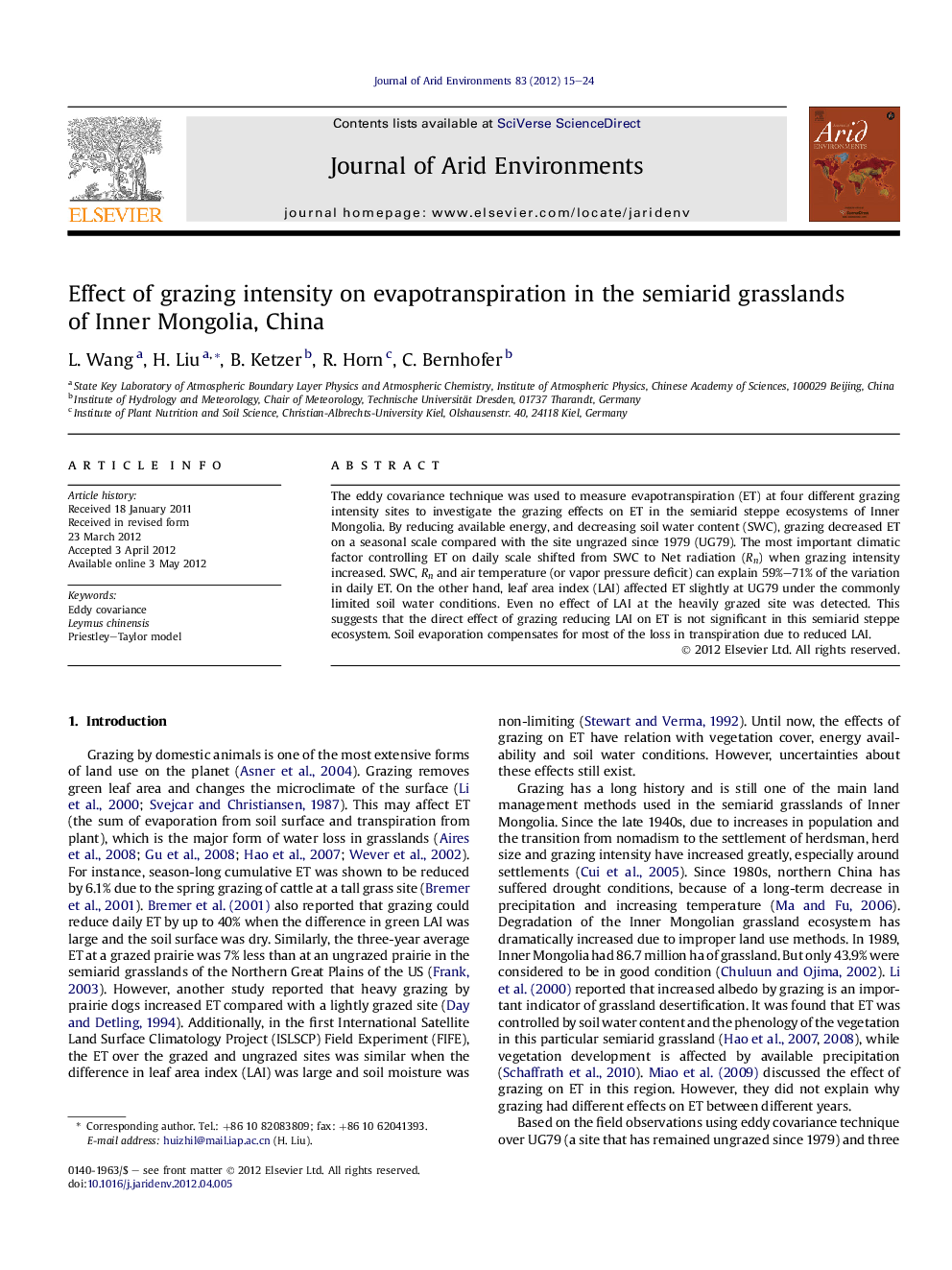| Article ID | Journal | Published Year | Pages | File Type |
|---|---|---|---|---|
| 4393335 | Journal of Arid Environments | 2012 | 10 Pages |
The eddy covariance technique was used to measure evapotranspiration (ET) at four different grazing intensity sites to investigate the grazing effects on ET in the semiarid steppe ecosystems of Inner Mongolia. By reducing available energy, and decreasing soil water content (SWC), grazing decreased ET on a seasonal scale compared with the site ungrazed since 1979 (UG79). The most important climatic factor controlling ET on daily scale shifted from SWC to Net radiation (Rn) when grazing intensity increased. SWC, Rn and air temperature (or vapor pressure deficit) can explain 59%–71% of the variation in daily ET. On the other hand, leaf area index (LAI) affected ET slightly at UG79 under the commonly limited soil water conditions. Even no effect of LAI at the heavily grazed site was detected. This suggests that the direct effect of grazing reducing LAI on ET is not significant in this semiarid steppe ecosystem. Soil evaporation compensates for most of the loss in transpiration due to reduced LAI.
► All the three levels of grazing intensities decreased ET on a seasonal scale. ► Reduction in available energy and SWC were responsible for the decreased ET. ► SWC, Rn and Ta (or VPD) can explain 59%–71% of the variations in daily ET. ► The direct effect of grazing reducing LAI on ET is not significant.
